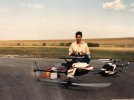Just to make something clear.. Drone is Mavic Mini
I know when it moves it need to create angle (tilt) so it can move, tilt angle when its moving is depends on the which mode of flying is using at the time
so P mode and C mode 20 degree pitch, S mode 30 degree max pitch.. ( so S mode will let drone to do max pitch angle = max speed 13m/s)
My question is when i am hovering in place (standing still) if I am at P mode and its windy days, will my Mini will fight the wind at maximum 20 degree pitch , or MODE is not important when drone is hovering - will fight the wind always at its maximum pitch = 30 degree ?
I know when it moves it need to create angle (tilt) so it can move, tilt angle when its moving is depends on the which mode of flying is using at the time
so P mode and C mode 20 degree pitch, S mode 30 degree max pitch.. ( so S mode will let drone to do max pitch angle = max speed 13m/s)
My question is when i am hovering in place (standing still) if I am at P mode and its windy days, will my Mini will fight the wind at maximum 20 degree pitch , or MODE is not important when drone is hovering - will fight the wind always at its maximum pitch = 30 degree ?
Last edited:











